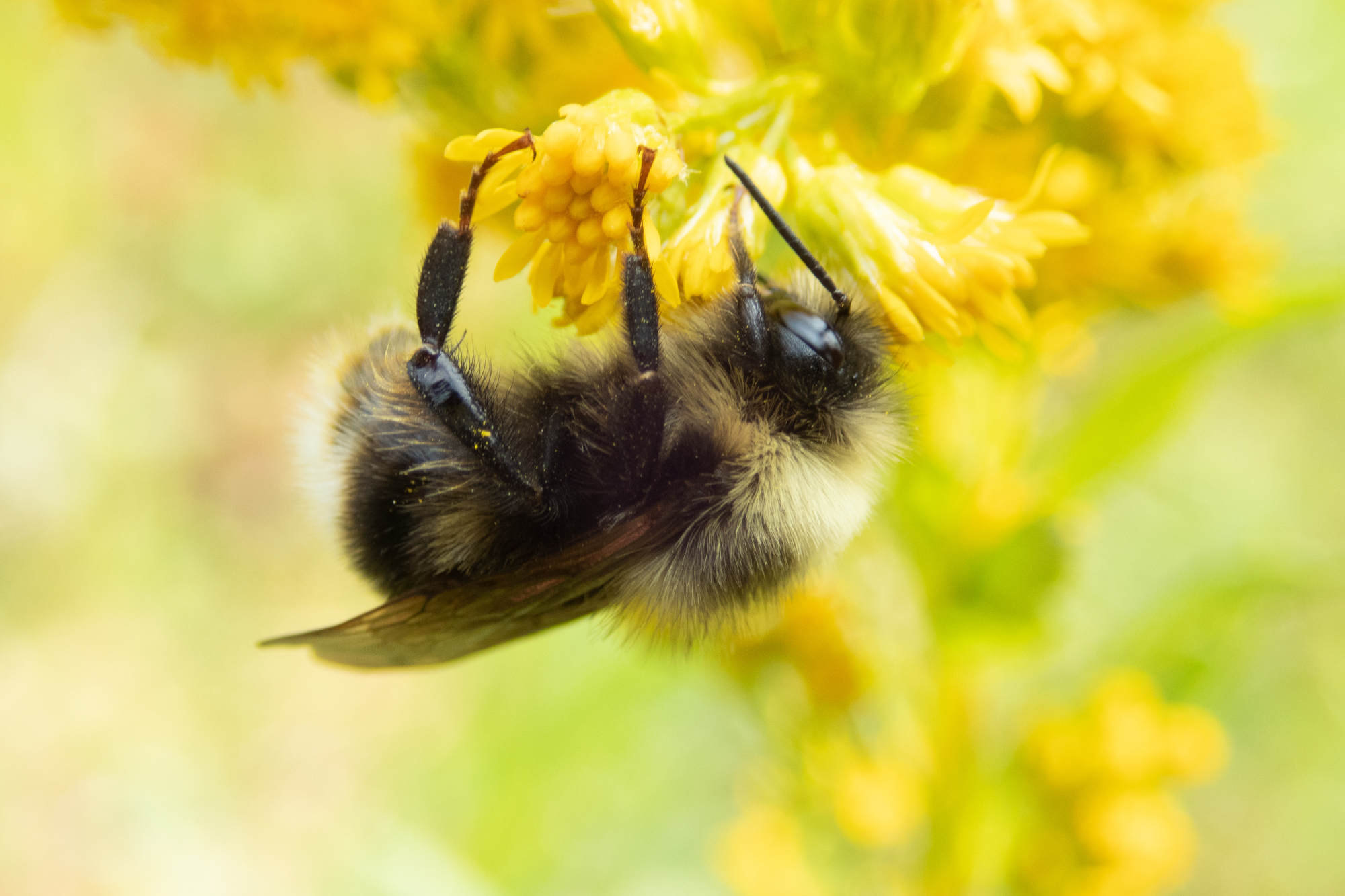Nevada’s new state wildlife plan includes bees, butterflies for first time

Bees, butterflies and other pollinators are key components of Nevada’s ecosystem, pollinating crops and native plants while serving as food for countless species.
There are thousands of these terrestrial invertebrates — land-dwelling species that lack backbones — in Nevada. But there’s a gap in how they’re managed and protected.
Agencies in charge of overseeing the state’s wildlife either don’t know enough about the terrestrial invertebrates to protect them or don’t have the explicit authority to do so. Nevada legislators determine which species state agencies manage.
The Nevada Division of Natural Heritage maintains data and status information on many of the species, but does not have statutory authority to manage them. Nor does the Nevada Department of Wildlife (NDOW). The Nevada Department of Agriculture only has authority over insects considered pests.
That gap in management prevents effective conservation and stewardship, according to wildlife managers and conservationists.
“Invertebrates are generally overlooked for a number of reasons,” said Jon Young, NDOW wildlife staff specialist. “But more and more states and scientists are acknowledging that ‘OK, if we’re serious about protecting the habitat, we can’t not talk about plants and bugs.’ That’s the most obvious connection – without one you don’t have the other.”
During the last legislative session, lawmakers considered a bill (AB221) that would have granted state wildlife managers authority over terrestrial invertebrates in Nevada, but it died in a budget committee.
Despite the bill’s failure, NDOW added terrestrial invertebrates to its recently released state wildlife action plan. The plan, last updated more than a decade ago, is aimed at fulfilling requirements for the federal State Wildlife Grant program.
Nevada’s most recent iteration of the plan listed 367 species as those of greatest conservation need and includes 66 terrestrial invertebrates — 42 butterflies, 23 bees and one beetle — as such species.
Their listing marks the first time terrestrial invertebrates have been included in the plan.
“It is an important step toward getting them the attention they need,” said Kevin Burls, endangered species conservation biologist for the Xerces Society, a science-based nonprofit focused on the conservation of invertebrates. “Whether these insects are found in just one location or are more widespread, they represent an amazing natural heritage. If we, as Nevadans, do value our wildlife and our amazing natural heritage, then managing insects is a vital part of that.”

A tall order
NDOW does not have authority over terrestrial invertebrates because they are not defined as “wildlife,” according to a letter drafted by more than 140 scientists who supported AB221. But from a biological perspective, insects are wildlife, they argued, and there is no reason to exclude them from normal state management practices that apply science to help meet population and health goals.
If lawmakers last session had passed AB221, it would have defined nonpest terrestrial invertebrates in greatest need of conservation as wildlife, including the 66 terrestrial invertebrates.
But an animal does not need to be under the agency’s management to be included in its wildlife plan, according to Jen Newmark, wildlife diversity division administrator.
NDOW’s inclusion of terrestrial invertebrates comes as scientists are seeing their populations steadily decline. Insect populations are decreasing by 1 percent to 2 percent per year, and studies of the Western United States show that Nevada’s insects are similarly affected. According to scientists at UNR, butterfly populations around the state and beyond are declining by nearly 2 percent per year.
But scientists and wildlife managers can’t understand what is happening to species locally without baseline data, and the state doesn’t have that, according to NDOW.
To fix that, the state needs to increase its knowledge of the range and status of its rare terrestrial invertebrates, which will be no small feat. There are thousands in the state — butterflies and bees alone account for more than 1,000 species in Nevada — and there are only a half dozen or so biologists such as Young who work in the state’s wildlife diversity department, ensuring their survival.
“This is where our division has a tall order,” Young said, adding that with a small staff, monitoring and managing just the 367 species listed in the wildlife plan is daunting. “Relative to the whole state,it is still very small, but when I look at that, that’s a big number.”
Sixty-eight of Nevada’s insects are endemic — they live nowhere else in the world. And Nevada ranks eighth in the nation for diversity in its butterfly species.
“Most people notice things like bighorn sheep, all big and majestic, or baby bears, all cute and fuzzy,” Young said. “With invertebrates, people think, ‘Oh it’s a bug, it’s a pest, something to be smashed.’ Or they don’t even notice it.”

Looking out for obscure species
Nevada’s wildlife plan is part of a broader national strategy to conserve wildlife and habitats. Early conservation efforts focused primarily on species affected by hunting and fishing, but now, the national plans protect more than 12,000 species. In Nevada, the 367 species earmarked as those of greatest conservation need this year mark a substantial increase over the 257 noted in the state’s last report, published a decade ago.
Designating an animal a species of greatest conservation need doesn’t carry the same weight as being listed on the endangered species act, but the designation helps the agency draft an action plan for the species, Young said.
Congress requires that each state submit a wildlife action plan, addressing eight elements, in order to qualify for a portion of $70 million in federal funding. On average, Nevada receives about $800,000 annually through the wildlife grant to fund departments such as wildlife diversity, where Young works.
“I want people to know that Nevada is looking out for the obscure things,” Young said. “The underdogs — the bats, the butterflies, the lizards — they are definitely on our radar.”
A 2006 study found insects contribute $57 billion to the U.S. economy each year, through benefits such as pest control and crop pollination, equaling about $70 billion in 2020 when adjusted for inflation.
Having quantifiable metrics like that helps conservationists motivate agencies and policymakers, Burls said.
“It’s harder to motivate agencies when you don’t have the metrics of the importance of them,” he said. “Now, we have that.”
